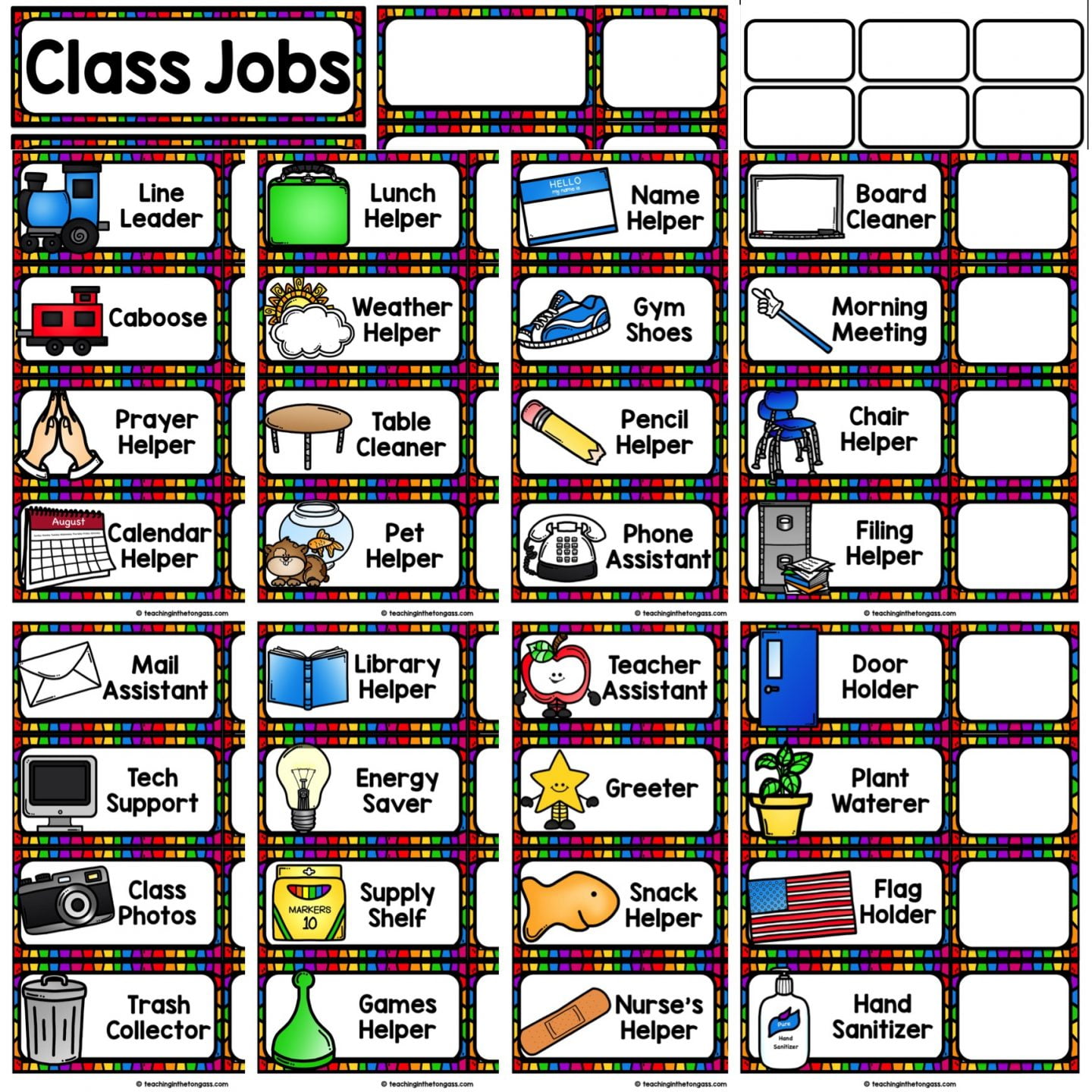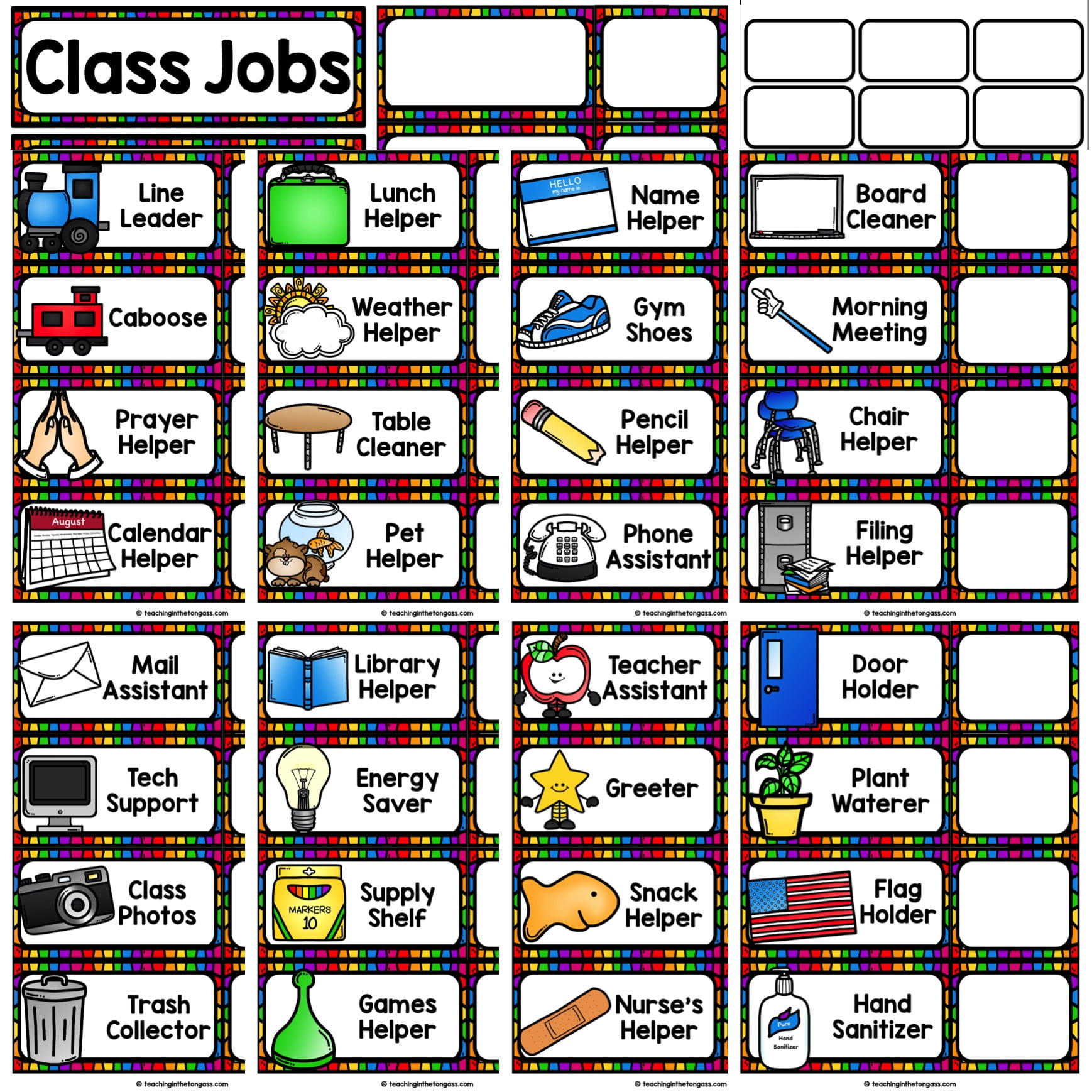Introduction
Having a well-organized classroom is crucial for creating a positive learning environment. One effective way to achieve this is by implementing a classroom duties and class jobs helper chart. This chart not only helps distribute responsibilities among students but also fosters a sense of ownership and teamwork. In this article, we will explore the benefits of using a classroom duties chart and provide some practical tips for its implementation.

The Importance of Classroom Duties
Assigning classroom duties to students has numerous benefits. Firstly, it teaches them valuable life skills such as responsibility, time management, and organization. By having specific tasks to complete regularly, students learn to prioritize and develop a sense of accountability.

Secondly, classroom duties promote a sense of community and cooperation among students. When everyone contributes to the smooth running of the classroom, a supportive and inclusive atmosphere is created. Students learn to appreciate each other's efforts and develop empathy.

Furthermore, having assigned roles allows the teacher to focus on instruction and reduces their workload. By delegating certain tasks to students, teachers can devote more time to planning engaging lessons and providing individualized support to students.

Implementing a Class Jobs Helper Chart
To effectively implement a class jobs helper chart, follow these steps:
- Identify tasks: Begin by listing all the tasks that need to be done regularly in the classroom. These may include cleaning, organizing supplies, feeding class pets, or taking attendance.
- Create a chart: Design a visually appealing chart that displays the different tasks and the names of the students assigned to them. Make sure to leave space for rotating the responsibilities periodically.
- Assign duties: Assign duties to students based on their abilities and interests. Consider rotating the tasks periodically to give everyone a chance to learn different responsibilities.
- Explain expectations: Clearly communicate the expectations for each task to the students. Provide instructions and demonstrate how to complete the duties effectively.
- Monitor and reward: Regularly monitor students' performance in their assigned duties. Provide constructive feedback and recognize their efforts through verbal praise or small rewards.
- Promote teamwork: Encourage students to collaborate and help each other with their duties. Foster a sense of teamwork and emphasize the importance of supporting one another.
- Review and adjust: Regularly review the effectiveness of the class jobs helper chart. Seek feedback from students and make adjustments as needed to ensure its smooth functioning.






Conclusion
Implementing a classroom duties and class jobs helper chart is a valuable strategy for fostering responsibility, teamwork, and organization in the classroom. By distributing tasks among students, teachers can create a sense of ownership and empower students to contribute to the overall functioning of the classroom. Through regular monitoring and recognition, students develop important life skills and learn the value of collaboration. Start implementing a class jobs helper chart in your classroom today and experience the positive impact it can have on your students' learning journey.